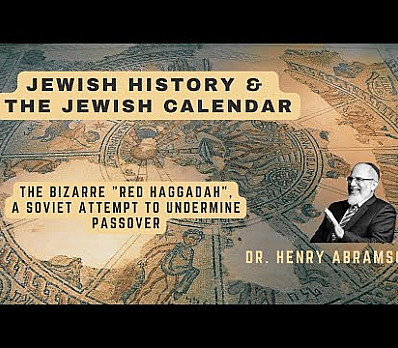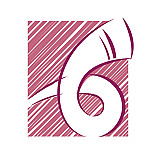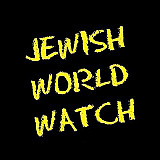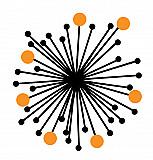The Exodus Story, part 1 (exile to plagues)
This version of the exodus story is taken from Cokie and Steve Roberts' Our Haggadah (Harper Collins 2011), which they say is adapted from the Revised English Bible. We will take turns reading paragraphs below:
*****
When there was famine in Canaan, “Jacob and all his family with him, his sons and their sons, his daughters and his sons’ daughters, he brought them all to Egypt.” Jacob’s son Joseph was the prime minister to the Pharaoh, who welcomed into his land Jacob and all of his family.
“In the course of time, Joseph and all his brothers and that entire generation died. The Israelites were prolific and increased greatly, becoming so numerous and strong that the land was full of them. When a new king ascended the throne of Egypt, one who did not know Joseph, he said to his people, ‘These Israelites have become too many and too strong for us. We must take steps to ensure that they increase no further; otherwise we shall find that, if war comes, they will side with the enemy, fight against us, and become masters of the country.’
“So taskmasters were appointed over them to oppress them with forced labor. This is how Pharaoh’s store cities, Pithom and Ramses, were built. But the more oppressive the treatment of the Israelites, the more they increased and spread, until the Egyptians came to loathe them. They ground down their Israelite slaves, and made life bitter for them with their harsh demands, setting them to make mortar and bricks and to do all sorts of tasks in the fields.
“Pharaoh then issued an order to all the Egyptians that every newborn Hebrew boy was to be thrown into the Nile, but all the girls were to be allowed to live.”
A Levite woman “conceived and bore a son, and when she saw what a fine child he was, she kept him hidden for three months. Unable to conceal him any longer, she got a rush basket for him, made it water-tight with pitch and tar, laid him in it, and placed it among the reeds by the bank of the Nile. The child’s sister stood some distance away to see what would happen to him.
“Pharaoh’s daughter came down to bathe in the river, while her ladies-in-waiting walked on the bank. She noticed the basket among the reeds and sent her slave girl to bring it. When she opened it, there was the baby; it was crying and she was moved with pity for it. ‘This must be one of the Hebrew children,’ she said. At this the sister approached Pharaoh’s daughter: ‘Shall I go and fetch you one of the Hebrew women to act as a wet nurse for the child?’” The baby was taken to his mother who nursed him and raised him. “Then, when he was old enough, she brought him to Pharaoh’s daughter, who adopted him and called him Moses, ‘because,’ said she, ‘I drew him out of the water.’
“One day after Moses was grown up, he went out to his own kinsmen and observed their labors. When he saw an Egyptian strike one of his fellow Hebrews he looked this way and that and, seeing no one about, he struck the Egyptian down and hid his body in the sand.
“When it came to Pharaoh’s ears, he tried to have Moses put to death, but Moses fled from his presence and went and settled in Midian.” There he married the daughter of Jethro and became the shepherd of Jethro’s flock.
“Years passed, during which time the king of Egypt died, but the Israelites still groaned in slavery. They cried out and their plea for rescue ascended to God.” One day when Moses was tending the sheep of his father-in-law he saw “a fire blazing out from a bush. Although the bush was on fire, it was not being burnt up, and Moses said to himself, ‘I must go across and see this remarkable sight. Why ever does the bush not burn away?’ When the Lord saw that Moses had turned aside to look, he called to him out of the bush, ‘Moses, Moses!’ He answered, ‘Here I am.’
“The Lord said, ‘I have witnessed the misery of my people in Egypt and have heard them crying out because of their oppressors. I know what they are suffering and have come down to rescue them from the power of the Egyptians and to bring them up out of that country into a fine, broad land, a land flowing with milk and honey.
“‘Come, I shall send you to Pharaoh, and you are to bring my people out of Egypt.’ ‘But who am I,’ Moses said to God, ‘that I should approach Pharaoh and that I should bring the Israelites out of Egypt?’ God answered, ‘I am with you.’” God told Moses to appoint his brother, Aaron, as his spokesman “and he will tell Pharaoh to let the Israelites leave his country. But I shall make him stubborn, and though I show sign after sign and portent after portent in the land of Egypt, Pharaoh will not listen to you.”
The Pharaoh refused to allow the people of Israel to leave Egypt, so the Lord sent plague after plague on Pharaoh and the Egyptians. Nine plagues the Lord inflicted on the Egyptians but still Pharaoh remained stubborn until God sent the tenth plague—the killing of the firstborn. But first, God instructed Moses to tell the Israelites to slay a lamb and “take some of the blood and smear it on the two doorposts and on the lintel of the house.
“It is the Lord’s Passover. On that night I shall pass through the land of Egypt and kill every firstborn of man and beast. Thus I shall execute judgment, I the Lord, against all the gods of Egypt. As for you, the blood will be a sign on the houses in which you are: when I see the blood I shall pass over you; when I strike Egypt, the mortal blow will not touch you. You are to keep this day as a day of remembrance, and make it a pilgrim-feast, a festival of the Lord; generation after generation you are to observe it as a statute for all time.”
Inspired to create
your own Haggadah?
Make your own Haggadah and share with other Seder lovers around the world
Have an idea
for a clip?
People like you bring their creativity to Haggadot.com when they share their ideas in a clip
Support Us
with your donation
Help us build moments of meaning and connection through
home-based Jewish rituals.
OUR TOP CONTRIBUTORS
Passover Guide
Hosting your first Passover Seder? Not sure what food to serve? Curious to
know more about the holiday? Explore our Passover 101 Guide for answers
to all of your questions.






















